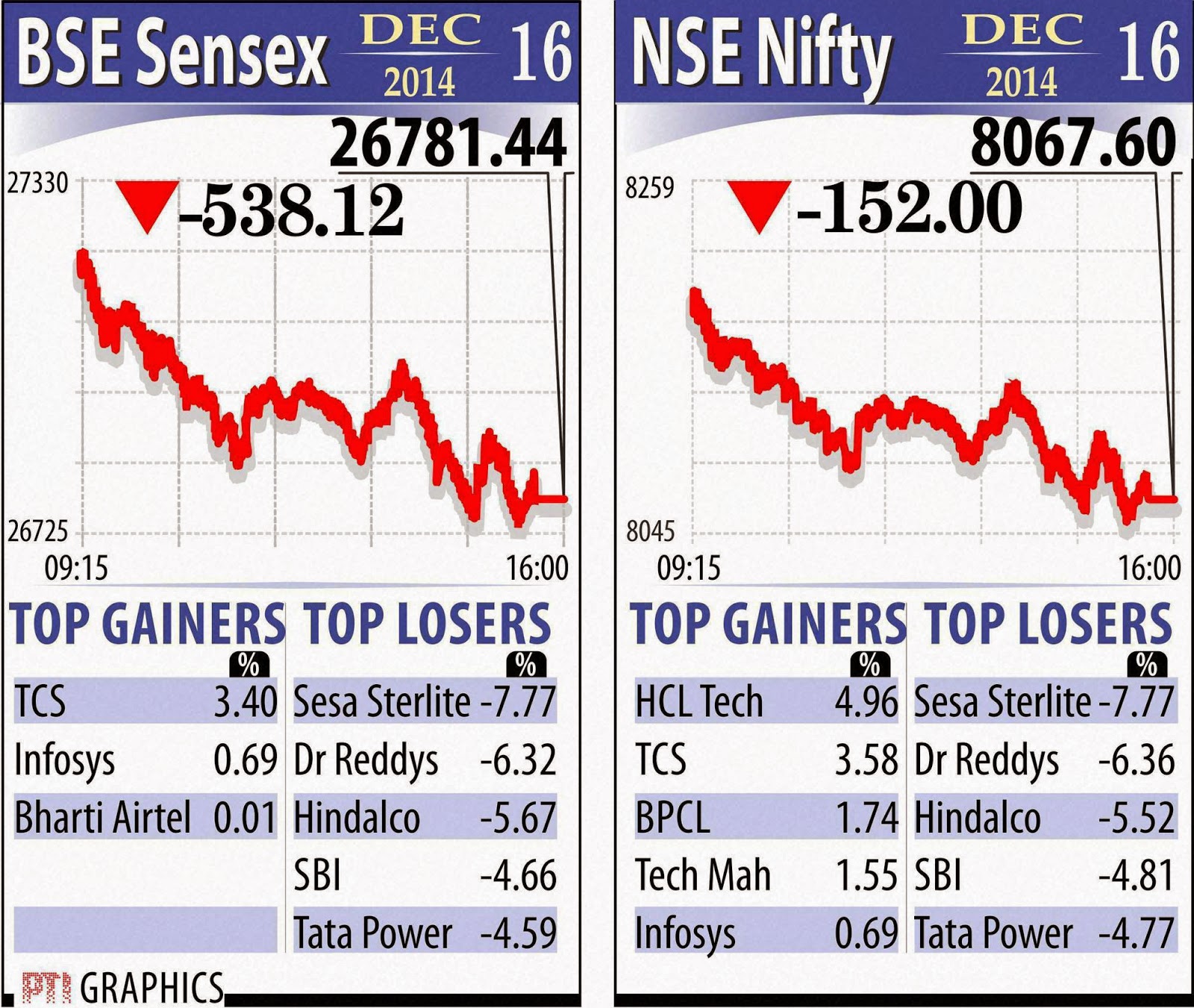Stock
market investors became richer by a whopping Rs 28 lakh crore in 2014
as a record market rally boosted the valuation of all listed firms to
Rs 98.36 lakh crore at the end of year. This was the fourth
consecutive year of rise in investor wealth. The year also saw
investor wealth hitting Rs 100 lakh crore mark. In 2014, the
benchmark Sensex rose by 6,328.74 points or 30 per cent and recorded
a record high of 28,822.37 on November 28. This is the highest annual
gain since 2009 when it had rallied by 7,817 points. The 30-share
gauge ended the year on a positive note at 27,499.42, up 95.88
points. The broader CNX Nifty of the National Stock Exchange also
firmed up by 34.45 points to end at 8,282.70. It has risen by 1,978.7
points or 31.38 per cent for the year 2014. The rise in investor
wealth was also on account of the continued rise in the number of
listed firms. At present, the total number of listed companies stands
at 5,542. Analysts said that Indian stock market saw an excellent
year riding high on robust investor sentiment, impressive foreign
fund inflow, formation of a new majority government at the Centre and
economic reforms. "Markets rode higher on the back of hope of
structural reforms driven by a decisive political mandate and
improving macro-economic balances. The new government reinforced its
position in the elections in some of the important states and
initiated the reforms in a gradual manner including those on FDI
norms, direct transfer benefit, diesel de-regulation, labour reforms,
coal allocation, ordinance on land acquisition, the 'Make in India'
initiative," said Devendra Nevgi, CEO, ZyFin Advisors. In the
stock market, TCS continued to remain the most valued firm as its
market valuation stands at Rs 5,00,396.24 crore. TCS is followed by
ITC, ONGC, RIL and CIL in the top five companies list. In 2014,
shares of Tata Motors zoomed 31.8 per cent, ONGC surged 18.22 per
cent, TCS gained 17.67 per cent) and ITC firmed up by 14.55 per cent.
Foreign investors have infused over USD 16 billion into equities this
year.
BEST
ANNUAL GROWTH IN 5 YEARS
Stocks
ended 2014 on a cheerful note with the Sensex today rising nearly 96
points to 27,499.42 and the Nifty climbing over 34 points to
8,282.70, helping the Indian markets notch up their best annual gain
in five years. The new government's reform initiatives, robust
foreign fund flows and a wave of optimism over growth prospects
pushed up share values in 2014, making investors richer by a whopping
Rs 28 lakh crore. The benchmark S&P BSE Sensex today rallied for
the fourth sraight session to end at almost one-week highs. The
market saw mostly across-the-board buying as 11 out of 12 sectoral
indices closed with gains. Power, realty, consumer durables, pharma
and oil & gas shares good activity. However, the BSE Auto index
closed in the red on selling in some stocks as excise duty incentives
for the sector would not be extended beyond December 31. The 30-share
Sensex resumed today a tad lower but recovered immediately. It
remained in positive terrain throughout the session to settle at
27,499.42, a rise of 95.88 points or 0.35 per cent. In straight four
sessions, it has spurted by 290.81 points or 1.07 per cent. For the
year as a whole, the Sensex registered 6,328.74 points or 29.89 per
cent -- its best gain since 2009. "Our market remains the hot
investment option. And this growth is expected to continue as
cyclical, rate-sensitive and investment-oriented stocks find flavour
with investors," said Kamlesh Rao, CEO, Kotak Securities.
Meanwhile, the broader 50-issue CNX Nifty of the NSE advanced by
34.45 points, or 0.42 per cent, to 8,282.70. The CNX Nifty has
spurted by 1,978.70 points, or 31.39 per cent, during 2014 calender
year.

















